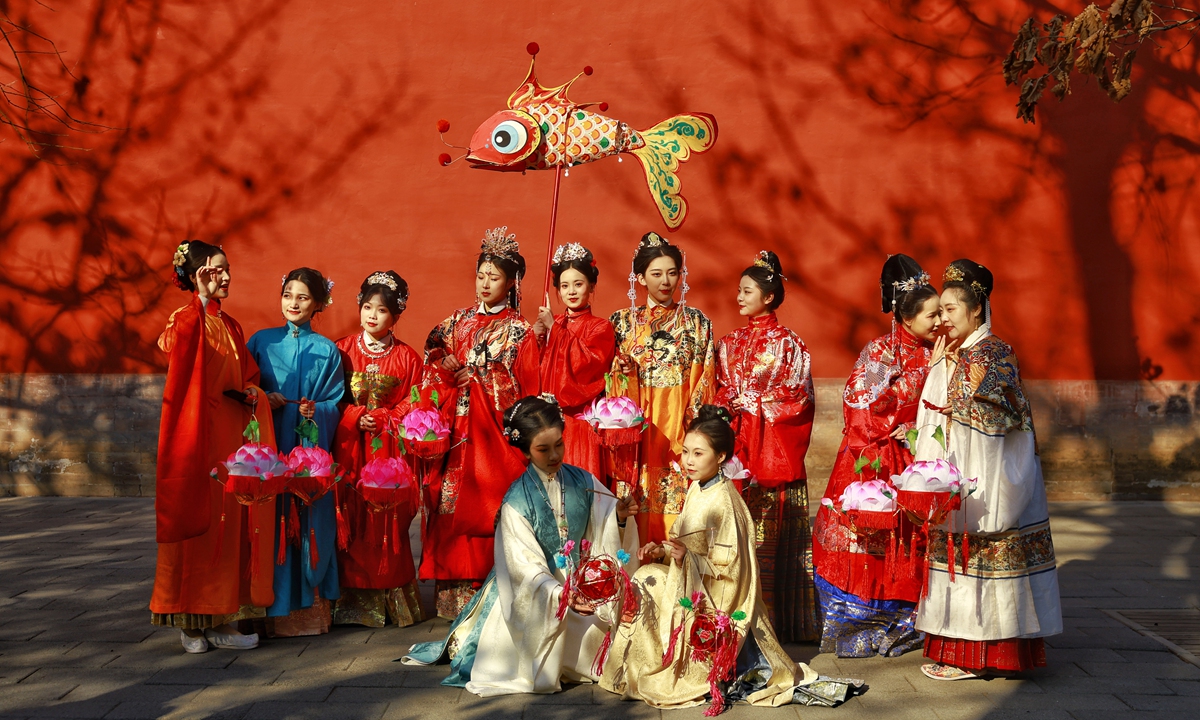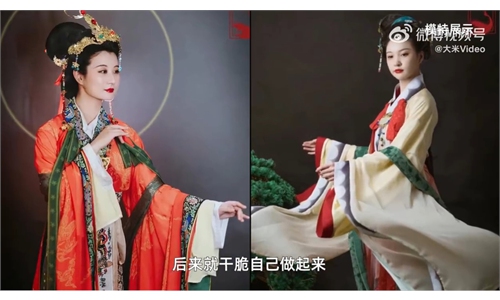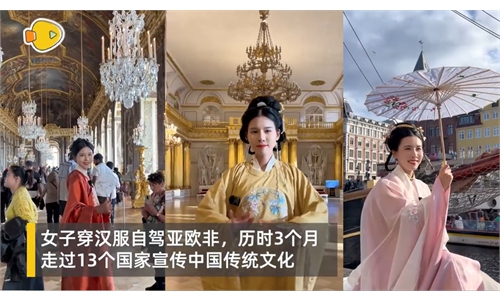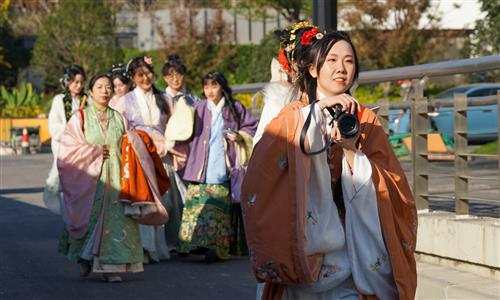ARTS / CULTURE & LEISURE
Free subway rides for passengers in ancient attire bring 'Hanfu' into daily life

Hanfu lovers celebrate the Lantern Festival at the Ming Tombs in Beijing.
One more Chinese city has earned itself some limelight in terms of the Spring Festival holiday. The transportation department in Suzhou, East China's Jiangsu Province has announced that passengers dressed in ancient Chinese attire will be able to ride the subway citywide for free.
According to Suzhou Rail Transit on Saturday, passengers in Hanfu, the traditional clothing of the Han people, and in ethnic clothing can enter the subway station without tickets from February 9 to 17.
As China's biggest reunion holiday is approaching, China's Ministry of Transportation said at a recent press conference that nearly 9 billion trips are expected to be made across the country within 40 days starting from January 26. People hope to visit friends, travel, and reunite with families during this period of time.
The participation of the transportation department during the Spring Festival has brought wearing ancient clothing, a hobby many people like to do to take pictures at scenic spots, into people's everyday lives. Many people are intrigued to see where this will go and what significance it has for future urban tourism.
Since the latter half of 2023, Chinese tourism departments in multiple cities seem to have formed a wave of "involution of getting as many visitors as possible" by showing off their most special tourism resources in a benign competition to boost the local economy.
This wave is now accelerated by the Chinese New Year holiday. Many cities are putting forward similar "travel benefits." In addition to the ticket-free policy, Changsha, Central China's Hunan Province, is providing drivers with a total of 60,000 parking spaces across the city for free during the Spring Festival.
As the free-entry measure introduced by Suzhou gained wide attention, some netizens commented that it "adds a touch of bustling ambiance to the Spring Festival."
But what's more, its unique combination of traditional culture and daily transport is further seen as not only reflecting residents' growing general respect for tradition but also the urban concept of cultural diversity.
In the past few years, people's interest in traditional Chinese clothes such as Hanfu and ethnic minority clothing has been steadily increasing. With the end of the COVID-19 pandemic, more and more scenic spots across the country began offering free admission for tourists in Hanfu, becoming a popular post-pandemic measure.
In contrast to previous years, when news frequently emerged about individuals being considered peculiar for wearing Hanfu to visit parks, these measures have now become a necessary means for major cities to shape their image and keep up with current trends.
For example, in mid-June, at the Jinci Museum located in Taiyuan, the capital city of North China's Shanxi Province, tourists dressed in Hanfu were given free admission to the museum in order to provide people with an immersive experience as part of a cultural festival held in the city.



